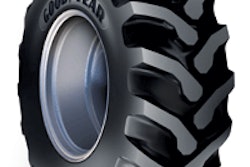Federal inspectors issued 134 citations, orders and safeguards during special impact inspections conducted at eight coal mines and eight metal/nonmetal mines in March, the Mine Safety and Health Administration (MSHA) announced on April 21. The coal mines were issued 55 citations, four orders and one safeguard; the metal/nonmetal operations were issued 69 citations and five orders.
These inspections, which began in force last April following the explosion at the Upper Big Branch Mine, involve mines that merit increased agency attention and enforcement due to their poor compliance history or particular compliance concerns, including high numbers of violations or closure orders; indications of operator tactics, such as advance notification of inspections that prevent inspectors from observing violations; frequent hazard complaints or hotline calls; plan compliance issues; inadequate workplace examinations; a high number of accidents, injuries or illnesses; fatalities; and adverse conditions such as increased methane liberation, faulty roof conditions and inadequate ventilation.
“Although we believe these impact inspections are making a positive difference for miners, some operators apparently aren’t getting the message that it is ultimately their responsibility to find and fix problems at their mines,” said Joseph A. Main, assistant secretary of labor for mine safety and health. “When operators take that responsibility seriously, miners are safer and healthier.”
On March 11, an inspection party arrived during the evening shift at S and H Mining Inc. in Campbell County, Tenn. After production started, the inspectors captured and monitored the phones to prevent advance notification of their arrival. They discovered conditions and practices that posed electrocution hazards to miners. There was no certification indicating that a pre-shift examination had been conducted at the No. 2 conveyor belt head drive power center. Also, a high-voltage cable supplying power to a conveyor belt head drive was not guarded, and there were footprints on the high voltage cable indicating miners had been exposed to the hazard. The inspectors also found a damaged trailing cable on a roof bolting machine located on the section, which would result in an electric shock to a miner who came in contact with the cable.
The CO monitoring system along the conveyor belt was not properly installed, and there was a defective CO sensor along the belt flight. The belt conveyor entry also had accumulations of combustible materials up to 7 inches in depth along the belt and 12 inches at the head drive. Although the accumulations were wet, under continued mining operations, this condition could pose fire, smoke inhalation, or explosion hazards.
In addition to the electrical, fire and explosion hazards, inspectors observed inadequate roof support conditions and discovered areas where the continuous mining machine had exceeded the roof control plan by clipping the corners of coal pillars, creating excessive widths in intersections and compromising coal pillar stability. These conditions could result in roof falls leading to serious injuries or death to miners in the area.
On March 4, an inspection party arrived during the evening shift after production had begun at ICG Knott County LLC’s Classic Mine in Knott County, Ky. Inspectors captured and monitored the phones to prevent advance notice of their arrival. Classic Mine was issued four unwarrantable failure orders for accumulations of float coal dust, coal dust and loose coal along four conveyor belts in the mine. The accumulations measured up to a distance of 2,000 feet along one belt conveyor and in depths up to 14 inches. These accumulations were noted in the operator’s examination books on the four shifts prior to this enforcement action, but there had been no apparent efforts by the operator to remove the combustible materials. If left uncorrected, the condition could have led to a mine fire. The operator had been cited 51 times in the last two years for violations of Code of Federal Regulations §75.400.
Since April 2010, MSHA has conducted 244 impact inspections. These inspections have resulted in 4,392 citations, 405 orders and 14 safeguards.
Click here for a spreadsheet containing the results of impact inspections in March.












